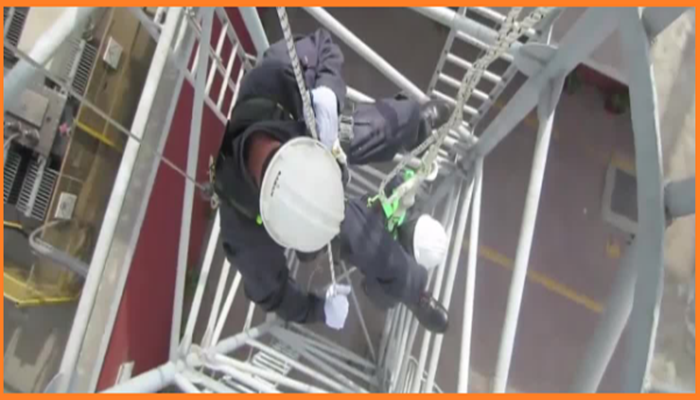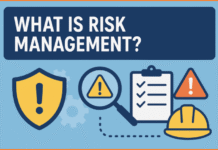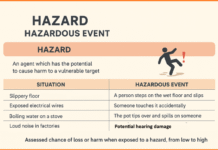As industries continue to evolve and embrace advancements in technology and methodologies, the need for ensuring workplace safety remains most important. Among the critical aspects of occupational safety is the protection of workers engaged in work at elevated heights. Primary fall protection systems, such as guardrails and personal fall arrest systems, play a major role in preventing accidents. However, incorporating secondary fall protection measures is an additional layer of protection that can significantly enhance overall safety.
Contents
What is Secondary Fall Protection
Secondary fall protection refers to safety measures designed to act as a backup in case the primary fall protection system fails. While primary systems are essential, unexpected circumstances or equipment malfunctions can occur, necessitating a secondary layer of defense. Secondary fall protection is not meant to replace primary systems but rather to provide an added level of security, offering peace of mind to workers and employers alike.
Key Components of Secondary Fall Protection:
- Fall Restraint Systems: Fall restraint systems prevent workers from reaching areas where a fall hazard exists. Unlike fall arrest systems that allow a fall to occur and then arrest the fall, restraint systems keep workers within a safe working zone, minimizing the risk of falling altogether.
- Safety Nets: Safety nets act as a passive form of protection, placed below the work area to catch workers in the event of a fall. When properly installed, safety nets can reduce the potential for injury or fatality by minimizing the distance a worker falls and preventing contact with lower surfaces.
- Climbing Protections: For tasks involving vertical climbing or descent, secondary fall protection measures may include additional safety devices such as ladder safety devices, vertical lifelines, or ladder cages. These systems complement primary fall arrest equipment to ensure continuous protection during ascent or descent.
- Work Positioning Systems: Work positioning systems provide workers the ability to maintain a stable position at an elevated height while performing tasks. These systems include adjustable lanyards, positioning belts, and platforms, allowing for hands-free work while preventing the risk of a free fall.

Benefits of Secondary Fall Protection:
- Redundancy and Reliability: Incorporating secondary fall protection measures adds redundancy to the safety system. In the rare event of a primary system failure, the secondary measures act as a reliable backup, mitigating the potential consequences of a fall.
- Increased Worker Confidence: Knowing that multiple layers of protection are in place can boost worker confidence and morale. Employees are more likely to focus on their tasks when they feel secure in the knowledge that their safety is a top priority for their employer.
- Compliance with Regulations: Many occupational safety regulations and standards require employers to implement both primary and secondary fall protection measures. By adhering to these guidelines, organizations not only ensure the safety of their workers but also demonstrate compliance with legal requirements.
In the work at height, prioritizing safety is not only a moral imperative but also a legal requirement. While primary fall protection systems lay the foundation for a secure work environment, integrating secondary fall protection measures adds an extra layer of assurance. The combination of these safety measures creates a comprehensive and robust safety net, reducing the likelihood of accidents and promoting a culture of well-being in the workplace. As industries evolve, so too should our commitment to enhancing safety standards, ensuring that every worker returns home safely at the end of the day.
Frequently Asked Questions (FAQ) for Secondary Fall Protection
Q1: What is secondary fall protection, and why is it necessary?
A1: Secondary fall protection refers to additional safety measures implemented alongside primary fall protection systems to act as a backup in case of system failure. It is necessary to provide an extra layer of defense, reducing the risk of falls and enhancing overall workplace safety.
Q2: How does secondary fall protection differ from primary fall protection?
A2: Primary fall protection systems, like guardrails and personal fall arrest systems, are designed to prevent falls initially. Secondary fall protection serves as a supplementary measure, offering a backup in case the primary system fails, ensuring a comprehensive safety approach.
Q3: What are some examples of secondary fall protection measures?
A3: Examples include fall restraint systems, safety nets, climbing protections (ladder safety devices, lifelines), and work positioning systems (adjustable lanyards, positioning belts).
Q4: Are secondary fall protection measures required by regulations?
A4: Yes, many occupational safety regulations and standards mandate the implementation of both primary and secondary fall protection measures. This ensures compliance with legal requirements and enhances overall workplace safety.
Q5: Do secondary fall protection measures replace primary systems?
A5: No, secondary fall protection is not intended to replace primary systems. Instead, it adds an extra layer of protection to augment the primary systems, creating a more robust safety net.
Q6: How do work positioning systems contribute to secondary fall protection?
A6: Work positioning systems, such as adjustable lanyards and positioning belts, allow workers to maintain a stable position at an elevated height while performing tasks. These systems prevent the risk of a free fall and enhance worker safety.
Q7: Can secondary fall protection boost worker confidence?
A7: Yes, knowing that multiple layers of protection are in place can boost worker confidence and morale. This confidence contributes to a positive safety culture in the workplace.
Q8: Are there any benefits to implementing secondary fall protection?
A8: Yes, benefits include increased redundancy and reliability, improved worker confidence, and compliance with safety regulations. Secondary fall protection measures reduce the likelihood of accidents and enhance overall workplace safety.
Q9: How often should secondary fall protection systems be inspected?
A9: Regular inspections, in accordance with manufacturer guidelines and industry standards, are crucial. Inspections should occur before each use and periodically to ensure that all components are in proper working condition.
Q10: Can I customize secondary fall protection measures based on my industry’s specific needs?
A10: Yes, it’s essential to tailor secondary fall protection measures to the specific requirements and challenges of your industry. Consult with safety experts and follow industry standards to ensure an effective and customized safety solution.





